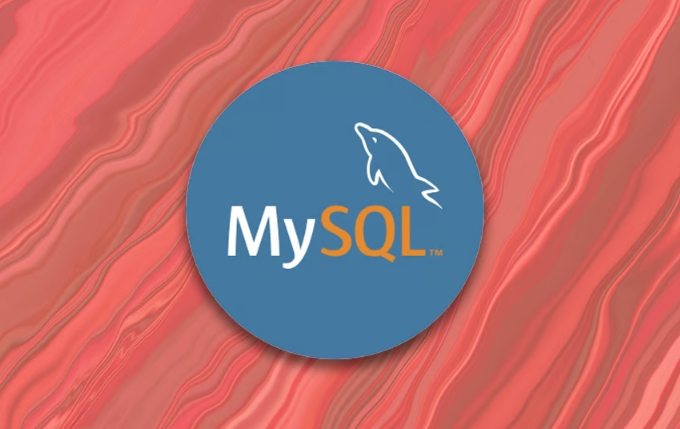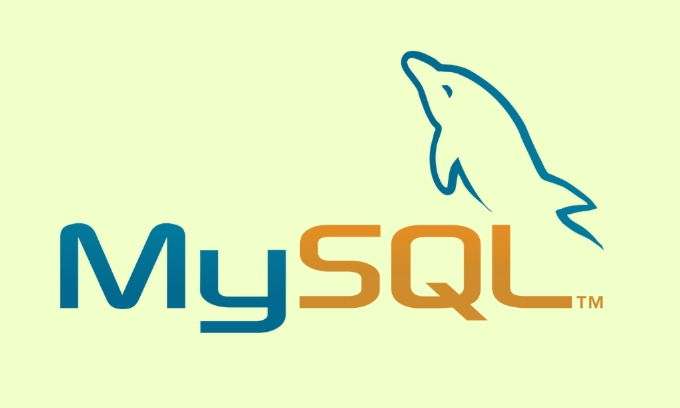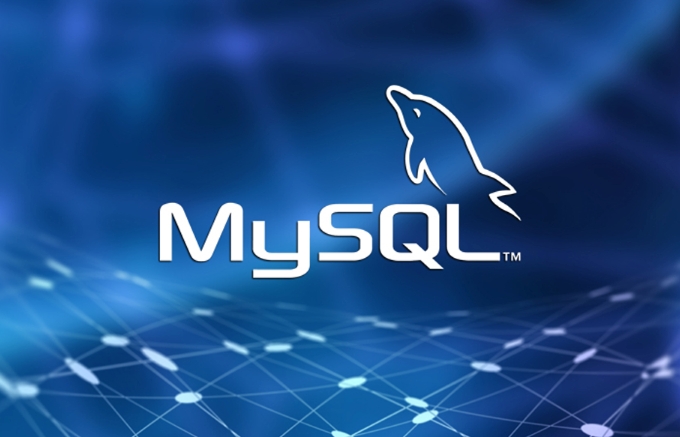The steps to upgrade MySQL server to the new version include: 1. Confirm the current version and target version, use the stable version and check application compatibility; 2. Completely back up the data, use mysqldump or physical backup to ensure consistency; 3. Select the upgrade method, such as system package manager, binary package or source code installation; 4. Check the log after the upgrade, run mysql_upgrade, and optimize configuration and permissions. The entire process needs to be operated with caution to ensure that the service is stopped before performing the upgrade action, and finally restart the service and verify that the function is normal.

Upgrading MySQL server to a new version is usually for better performance, security updates, or new features. But if you haven't done it a few times, you may find it a bit troublesome. In fact, as long as the steps are clear and the backup is in place, the whole process is not complicated.

Confirm the current version and target version
Before you start, figure out which version you are currently running. You can use the following command to view:

mysql -V
After confirming the current version, decide which version to upgrade to. Generally speaking, it is recommended to choose a stable version (GA) instead of a development version or a beta version. For example, upgrading from 5.7 to 8.0 is a common choice.
Also, be careful whether the new version is compatible with your app. Some large versions of upgrades will bring problems such as configuration file format changes, default parameter adjustments, and even some functions being deprecated.

Backup data is a must
This step cannot be skipped. Even if it is just a small version upgrade, there may be problems. The safest way is to do a complete database backup, including all databases and MySQL system tables.
You can use mysqldump for logical backup:
mysqldump --all-databases --single-transaction --routines --events --triggers > backup.sql
You can also copy the data directory directly (physical backup), but pay attention to permissions and consistency.
If you use the master-slave architecture, remember to stop writing first to ensure that the data is consistent before backing up.
Choosing upgrade method
MySQL provides several common upgrade methods, which one depends on your environment and needs.
- Use the system package manager : For example, you can use
apton Ubuntu,yumordnfon CentOS. This method is suitable for simple and quick upgrades, but you may not necessarily get the latest version. - Manually install the binary package : Download the official tar package and replace the old executable files and library files. Suitable for people who have a certain ability to control the server.
- Source code compilation and installation : suitable for scenarios with customization needs, but the operation is complicated and time-consuming.
No matter which method is used, you must pay attention to stopping the MySQL service before performing operations to avoid data corruption or configuration conflicts.
Upgraded inspection and optimization
After the upgrade is completed, don't rush to go online. Start MySQL first and check if there is any error message in the log. Especially if you upgrade a large version, such as from 5.7 to 8.0, you need to run mysql_upgrade to repair the system table:
mysql_upgrade
Then restart the MySQL service to allow the changes to take effect.
There are also a few things you can do:
- Check whether the slow query log is on and whether it is necessary to adjust it
- Update user permissions (some default permission structures may change)
- Adjust the configuration file and enable new features supported by the new version
Basically that's it. As long as the preliminary preparation is sufficient, the upgrade process will not be too difficult, but many details are easy to ignore, especially version compatibility and permission issues, which are worth spending more time confirming.
The above is the detailed content of Upgrading MySQL Server to a Newer Version. For more information, please follow other related articles on the PHP Chinese website!

Hot AI Tools

Undress AI Tool
Undress images for free

Undresser.AI Undress
AI-powered app for creating realistic nude photos

AI Clothes Remover
Online AI tool for removing clothes from photos.

Clothoff.io
AI clothes remover

Video Face Swap
Swap faces in any video effortlessly with our completely free AI face swap tool!

Hot Article

Hot Tools

Notepad++7.3.1
Easy-to-use and free code editor

SublimeText3 Chinese version
Chinese version, very easy to use

Zend Studio 13.0.1
Powerful PHP integrated development environment

Dreamweaver CS6
Visual web development tools

SublimeText3 Mac version
God-level code editing software (SublimeText3)

Hot Topics
 How to upgrade PHP version?
Jun 27, 2025 am 02:14 AM
How to upgrade PHP version?
Jun 27, 2025 am 02:14 AM
Upgrading the PHP version is actually not difficult, but the key lies in the operation steps and precautions. The following are the specific methods: 1. Confirm the current PHP version and running environment, use the command line or phpinfo.php file to view; 2. Select the suitable new version and install it. It is recommended to install it with 8.2 or 8.1. Linux users use package manager, and macOS users use Homebrew; 3. Migrate configuration files and extensions, update php.ini and install necessary extensions; 4. Test whether the website is running normally, check the error log to ensure that there is no compatibility problem. Follow these steps and you can successfully complete the upgrade in most situations.
 How to add the MySQL bin directory to the system PATH
Jul 01, 2025 am 01:39 AM
How to add the MySQL bin directory to the system PATH
Jul 01, 2025 am 01:39 AM
To add MySQL's bin directory to the system PATH, it needs to be configured according to the different operating systems. 1. Windows system: Find the bin folder in the MySQL installation directory (the default path is usually C:\ProgramFiles\MySQL\MySQLServerX.X\bin), right-click "This Computer" → "Properties" → "Advanced System Settings" → "Environment Variables", select Path in "System Variables" and edit it, add the MySQLbin path, save it and restart the command prompt and enter mysql--version verification; 2.macOS and Linux systems: Bash users edit ~/.bashrc or ~/.bash_
 How to install MySQL on Windows 11
Jun 29, 2025 am 01:47 AM
How to install MySQL on Windows 11
Jun 29, 2025 am 01:47 AM
The key steps for installing MySQL on Windows 11 are as follows: 1. Download the correct version, select the Windows MSI installation package and ensure that the system is 64-bit; 2. Select the "Custom" mode during installation, add MySQLServer and set the appropriate installation path; 3. Run the configuration wizard, select the "ServerComputer" configuration type, set the root password, and select the automatic startup method; 4. After the test installation is successful, if the prompt command is unavailable, add the MySQL bin directory to the system PATH environment variable. Follow these steps to complete the installation and configuration smoothly.
 Resetting the root password for MySQL server
Jul 03, 2025 am 02:32 AM
Resetting the root password for MySQL server
Jul 03, 2025 am 02:32 AM
To reset the root password of MySQL, please follow the following steps: 1. Stop the MySQL server, use sudosystemctlstopmysql or sudosystemctlstopmysqld; 2. Start MySQL in --skip-grant-tables mode, execute sudomysqld-skip-grant-tables&; 3. Log in to MySQL and execute the corresponding SQL command to modify the password according to the version, such as FLUSHPRIVILEGES;ALTERUSER'root'@'localhost'IDENTIFIEDBY'your_new
 Handling NULL Values in MySQL Columns and Queries
Jul 05, 2025 am 02:46 AM
Handling NULL Values in MySQL Columns and Queries
Jul 05, 2025 am 02:46 AM
When handling NULL values ??in MySQL, please note: 1. When designing the table, the key fields are set to NOTNULL, and optional fields are allowed NULL; 2. ISNULL or ISNOTNULL must be used with = or !=; 3. IFNULL or COALESCE functions can be used to replace the display default values; 4. Be cautious when using NULL values ??directly when inserting or updating, and pay attention to the data source and ORM framework processing methods. NULL represents an unknown value and does not equal any value, including itself. Therefore, be careful when querying, counting, and connecting tables to avoid missing data or logical errors. Rational use of functions and constraints can effectively reduce interference caused by NULL.
 Troubleshooting MySQL installation errors on Windows
Jun 27, 2025 am 01:22 AM
Troubleshooting MySQL installation errors on Windows
Jun 27, 2025 am 01:22 AM
Common problems with installing MySQL on Windows include the service cannot be started, the port is occupied or the configuration failed. The solutions are as follows: 1. When encountering "MySQL80 service cannot be started", you should stop and delete the old service, clean up residual data, or use the "Remove" function that comes with the installer; 2. If an error is reported as "Error:1053" when starting the service, you need to check the log to confirm the port conflict and modify the port number in my.ini; 3. When the configuration wizard prompts "Service not responding", check and end the unresponsive mysqld.exe process, or manually run mysqld--console to view the output; 4. If the connection to the database is denied, you can use the password-free login method to reset the root user password.
 Analyzing the MySQL Slow Query Log to Find Performance Bottlenecks
Jul 04, 2025 am 02:46 AM
Analyzing the MySQL Slow Query Log to Find Performance Bottlenecks
Jul 04, 2025 am 02:46 AM
Turn on MySQL slow query logs and analyze locationable performance issues. 1. Edit the configuration file or dynamically set slow_query_log and long_query_time; 2. The log contains key fields such as Query_time, Lock_time, Rows_examined to assist in judging efficiency bottlenecks; 3. Use mysqldumpslow or pt-query-digest tools to efficiently analyze logs; 4. Optimization suggestions include adding indexes, avoiding SELECT*, splitting complex queries, etc. For example, adding an index to user_id can significantly reduce the number of scanned rows and improve query efficiency.
 Performing logical backups using mysqldump in MySQL
Jul 06, 2025 am 02:55 AM
Performing logical backups using mysqldump in MySQL
Jul 06, 2025 am 02:55 AM
mysqldump is a common tool for performing logical backups of MySQL databases. It generates SQL files containing CREATE and INSERT statements to rebuild the database. 1. It does not back up the original file, but converts the database structure and content into portable SQL commands; 2. It is suitable for small databases or selective recovery, and is not suitable for fast recovery of TB-level data; 3. Common options include --single-transaction, --databases, --all-databases, --routines, etc.; 4. Use mysql command to import during recovery, and can turn off foreign key checks to improve speed; 5. It is recommended to test backup regularly, use compression, and automatic adjustment.






